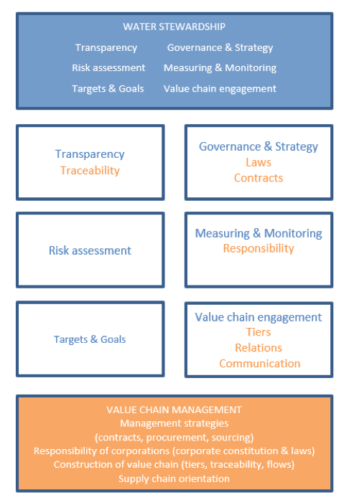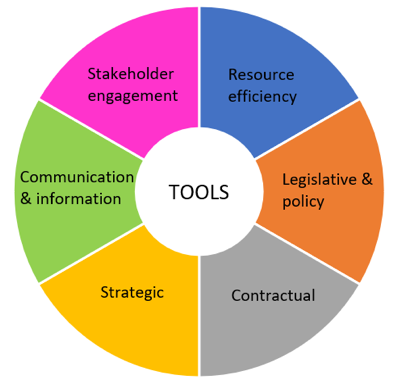How do Finnish corporations see water stewardships and what are their biggest challenges with it? What are the tools that corporations use and could be used for water sustainable value chain management? Enni Huotari investigated these issues in her Master’s Thesis.
About a year ago I stumbled across this concept of water stewardship. There was not much information available of the concept, but still it caught my attention immediately. I thought that this could be something I would like to focus in my master’s thesis. I knew that I want to do a multidisciplinary, not too technical dissertation that is somehow related to the topics of Water and Development group. And I ended up doing exactly that.
I started discussions with Marko Keskinen, Suvi Sojamo and Anu Reinikainen who acted as my supervisor and advisors. We discussed a lot about possible topics and after all these discussions the topic: “Water Stewardship in Finnish corporations – developing a toolbox for value chain management” was created.
Corporate water stewardship means environmentally, economically and socially sustainable use of water in corporations’ own activities and in their value chains. Corporations are great users of freshwater and due to growing water demand also corporations must pay attention how water resources are used and managed. Corporate water stewardship is a rather new thing among Finnish corporations and especially the value chain aspect of it. So, I focused on studying how Finnish corporations see water stewardships and what are their biggest challenges with it. Furthermore, I investigated what are the tools that corporations use for value chain management and identified tools that could be used for a water sustainable value chain management.
To do that, I familiarized myself with two big concepts; corporate water stewardship and value chain management. I established an analytical framework that combines water reporting framework by Climate Disclosure Program to value chain management theories (Figure 1).

I interviewed representatives from corporations who are performing well with water stewardship, one water stewardship expert and one value chain expert. Interview as a research method was something new to me, because in my previous studies I have focused on more quantitative research methods. However, I gained really interesting data from interviews. While interviewed corporations work in different industries the challenges they are facing with water stewardship are similar. Value chains are complex and can include several different processes in several different countries and river basins. Corporations are yet mostly focused on developing better water use practises in their own facilities. To answer these challenges among others, I created a toolbox for water sustainable value chain management. The toolbox consists of six categories, that include several practical tools (Figure 2). The toolbox will hopefully help corporations to take water stewardship into account in value chain management and to build more water sustainable value chains.

I have learned so much during the thesis process. The topic was novel and quite complex, sometimes it felt almost too difficult and multidimensional. But after all, working with the thesis was so rewarding. I would say that my best decision with the thesis was to follow my intuition and focus on a topic that I really find interesting. I would advise everyone to do that, with thesis and in life.
Enni Huotari (MSc. Tech & MSc. Biology) finished her master’s thesis in Water and Development Group in August 2019.

